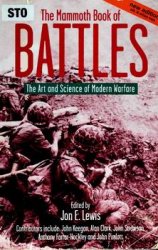Astronomy was not the only fi eld of inquiry in which mathematical speculation led to
radically new ideas. The French mathematician and philosopher René Descartes (1596–
1650) agreed with traditional teachings that everything depends on the power of God,
but he also asserted that God created the world according to mathematical principles.
Humans could perceive one perfect and infi nitely powerful being, Descartes reasoned,
only if that being actually existed and had created them. Along with this intuition
about God, Descartes wondered what else we could know for sure. Earlier writers such
as Michel de Montaigne (1533–92) had puzzled over this question of the foundation
of knowledge – a branch of philosophy known as epistemology – noting that established
authorities such as Aristotle had been proved wrong, and that sense perceptions
and empirical observations might be deceiving. Montaigne remained skeptical about
whether true knowledge is ever possible, but Descartes decided that what we can know
for certain is that we exist as thinking beings, a philosophical position called rationalism.
He captured this in the Discourse on Method (1637) in the phrase “I think, therefore
I am” (in Latin, Cogito ergo sum ).
From these two conceptions – God and self – the existence of the rest of the universe
and its laws could be posited by applying logical principles, a process called deduction.
In Descartes’s philosophical system, known as Cartesianism or Cartesian dualism, the
world consists of two basic substances, matter (or body) and mind (or spirit), each of
which can exist, at least theoretically, without the other. Humans are a union of these
two substances, but there is nothing material about the mind, and nothing spiritual
about the body or any other material objects, which only move when acted upon by
some outside force. Descartes thought that all motion could be explained as a result
of invisibly small particles pushing an object, a completely mechanical explanation.
Though he thought even gravity and magnetism operated this way, some of his followers
put greater emphasis on God as the ultimate cause of all events and actions in the
universe; God was thus the Prime Mover.
For Isaac Newton, the natural world provided unambiguous evidence for certain
religious ideas. An aloof and intense young man, Newton was a student and then professor
of mathematics at Cambridge, where he studied the new concepts of mechanics
and cosmology, and built the fi rst working refl ecting telescope. He developed the
calculus, a branch of mathematics that allows calculations involving rates of change,
varying quantities, and curved fi gures, that would ultimately underlie modern physics
and engineering as well as mathematics.
In the 1670s Newton studied the nature of light, and also studied the Bible and the
writings of the early Christian Church, because he was expected to be ordained as a
clergyman in the Anglican Church as a condition of his position at Cambridge. His
views on optics were published by the Royal Society, but his views on religion were
far too dangerous to be shared publicly. He decided that the doctrine of the Trinity,
in which the Father, Son, and Holy Spirit are equally part of a triune God, was not
part of the early church, but invented in the fourth century; the ultimate God was
one, not three, though Christ was divine. Denying the Trinity was heresy and also illegal,
so that Newton kept his religious writings private, and got special dispensation
to remain at Cambridge without being ordained. He also collected Hermetic and
alchemical texts, and spent decades trying to discover or manufacture a substance
that would cause metals to grow or transform. His extensive writings on alchemical
and spiritual subjects, which were never published, led the British economist
John Maynard Keynes, who bought Newton’s papers in the mid-twentieth century,
to declare that “Newton was not the fi rst of the age of reason … he was the last of
the magicians.”
Newton’s fame rested on works that were published, especially his most important
work, the Philosophiae naturalis principia mathematica (Mathematical Principles of
Natural Philosophy, usually just called the Principia ), published in 1687. The Principia
provided mathematical descriptions of the laws of motion and the operation of gravity.
This book brought together Galileo’s discoveries about motion on earth and Kepler’s
discoveries about motion in the heavens, developing universal laws that applied anywhere,
expressed in mathematical terms. All bodies attract one another across empty
space, with the force of attraction dependent on the size of the bodies and the distance
between them (universal gravitation), and all bodies continue to move or not move
unless an outside force acts on them (inertia). Though few people could actually understand
it, the Principia was immediately recognized as a work of genius, and Newton
was rewarded with a position as Master of the Royal Mint, in charge of issuing coins
and bills and preventing counterfeiting. Newton’s public fame and status continued to
grow. He was elected to Parliament several times, and elected president of the Royal Society
in 1703, a position he held until his death. He was given a magnifi cent state funeral
and was buried alongside kings and other notables in Westminster Abbey.
In the Principia Newton described how gravity operated, but not why , and the idea
that one body could attract another across empty space was initially unacceptable to
many continental thinkers. By the middle of the eighteenth century, however, Newton’s
ideas had triumphed, and other scientists began to apply his theorems to the study of
heat, light, magnetism, and electricity. His followers wrote popular works explaining
Newtonian science in terms that educated people who were not mathematicians could
understand, several labeled “Newton for the Ladies” or something similar. This fueled
the idea, as Pope expressed succinctly in his couplet, that Newton had once and for all
explained the mechanism of the universe.
Developments in science shaped philosophy, and also other realms of life. In politics,
fi nance ministers and other offi cials used more quantitative methods of administration;
governments began to take statistical surveys, attempting to calculate aggregate
fi gures for things like population growth, manufacturing output, income, and imports
and exports. This would allow more effective application of economic principles that
would lead to growth, offi cials reasoned, and also provide a sort of unifi ed picture of
the nation to parallel Newton’s unifi ed picture of the cosmos. In literature, writers
began to use scientifi c terms more widely in all types of prose, and some advocated a
simpler and plainer style, more in line with what they saw as a scientifi c emphasis on
clarity and logic. As Pope put it in another couplet:
Words are like leaves, and where they most abound
Much fruit of sense beneath is rarely found.
Not everyone was convinced of the value of science, however. In 1726, the year before
Newton’s death, Jonathan Swift (1667–1745) published Gulliver’s Travels , in which his
fi ctional traveler goes to Laputa and Lagado, where scientists are working on extracting
sunbeams from cucumbers, converting ice into gunpowder, building houses from the
roof downward, and preventing the growth of wool on sheep. All of these satires are
based on proposals being discussed by the Royal Society at the time Swift was writing.
Swift was not alone in pointing out that actual scientifi c discoveries did little to improve
the lives of most people. Newtonian ideas about motion helped gunners to fi re
their artillery more accurately, but in general scientifi c ideas had few practical effects
on technology until the very end of the eighteenth century.




 World History
World History









